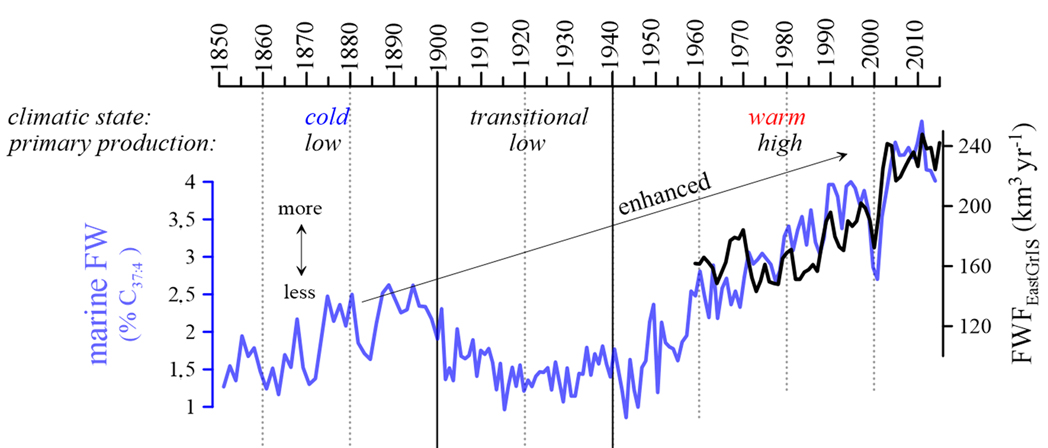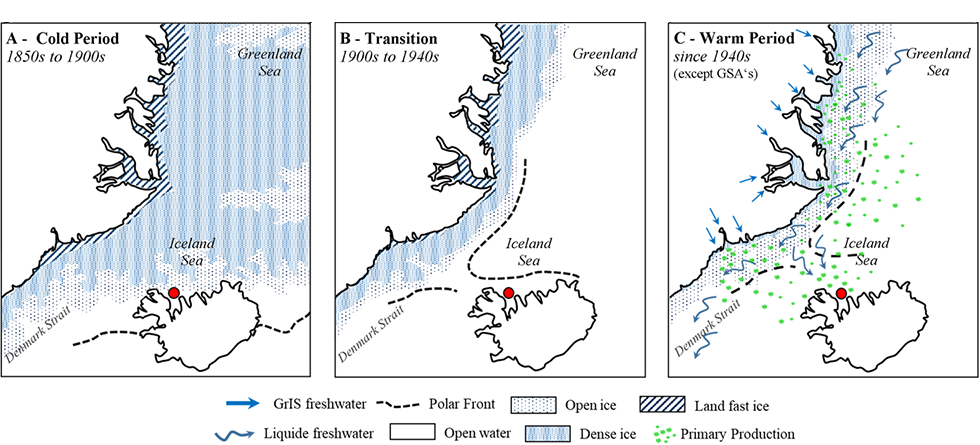The salinity of the water in the Nordic Seas depends on how much fresh meltwater that is supplied from Greenland and from the Arctic sea ice. This allows salinity to be used as a measure of ice melt. Additional freshwater may also influence the ocean circulation and the marine ecosystems in the Atlantic.
Salinity measurements have shown that more freshwater has entered the Nordic Seas during the last decades. But, without older instrumental data, scientists have not been able to say anything about variations in earlier times.
"Thirty years is not a long time", says Odd Helge Otterå, researcher at the Bjerknes Centre and NORCE.
He is one of the authors of a new article that documents the freshwater conditions of the Nordic Seas since 1850. Using samples from the ocean floor northwest of Iceland, scientists in Bergen and Germany have extended the observational record 130 years back in time.
The new data made it possible to compare the time before and after anthropogenic climate change began to influence Arctic ice melt.
Analyses of sediment cores from the ocean floor off Iceland indicate that the sea water there is now fresher than in any period since 1850, when the freswater supply was only half of what it is today.
Since the 1960's, anthropogenic climate change has increasingly contributed to ice melt, and temperatures have reached a record high. But the curve showing the freshwater concentration has increased steadily from the 1940's.

"The rate of warming in the Arctic in the first half ot the 20th Century was in many ways as strong as now", says Odd Helge Otterå.
He refers to how the increase in meltwater from Greenland started in a period when solar radiation increased, and both ocean currents and storms transported large amounts of heat northwards in the Atlantic. These natural factors explain to a large degree the increase in freshwater content till the 1990's. After that time, there is nothing in these forcings that would suggest a continued increase.
"If this was all about natural variations, we should now see reductions in some periods", says Odd Helge Otterå.
He emphasizes that natural variations still influence the amount of freshwater in the region, but that the anthropogenic component is likely larger. The researchers do not see any sign of coming reductions in the freshwater supply.
Reference
Perner, K., Moros, M., Otterå, O.H. et al. An oceanic perspective on Greenland’s recent freshwater discharge since 1850. Sci Rep 9, 17680 (2019) doi:10.1038/s41598-019-53723-z

